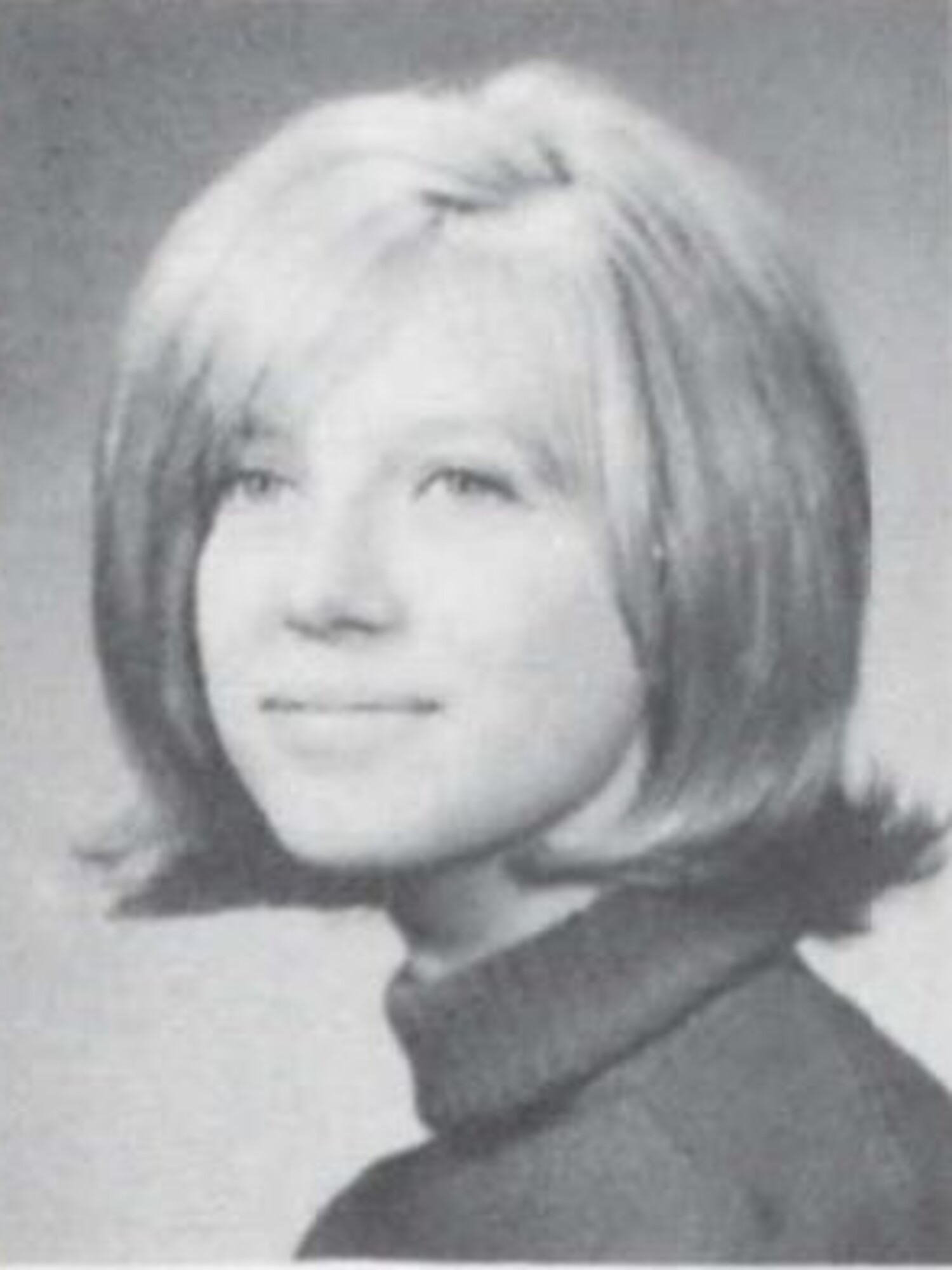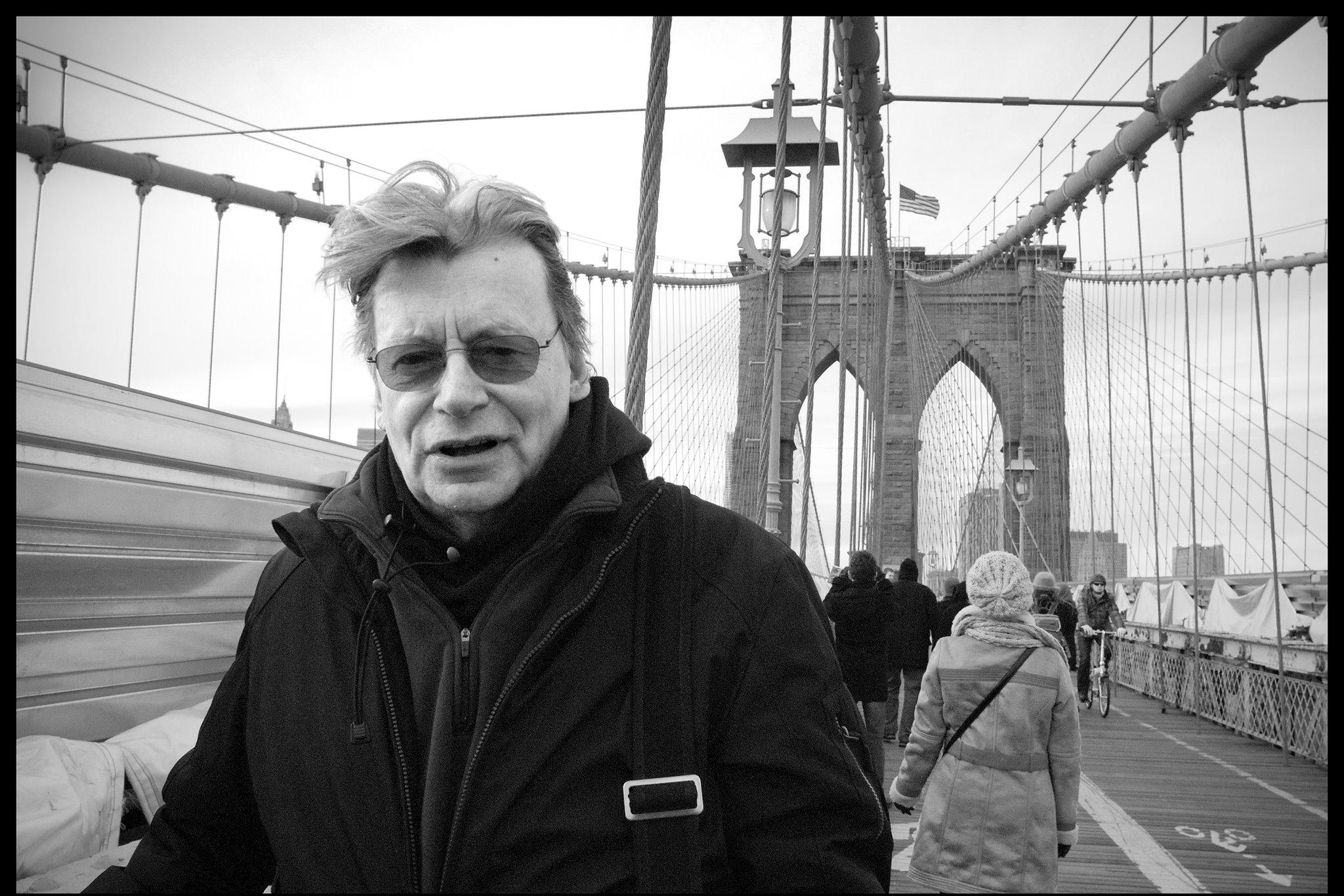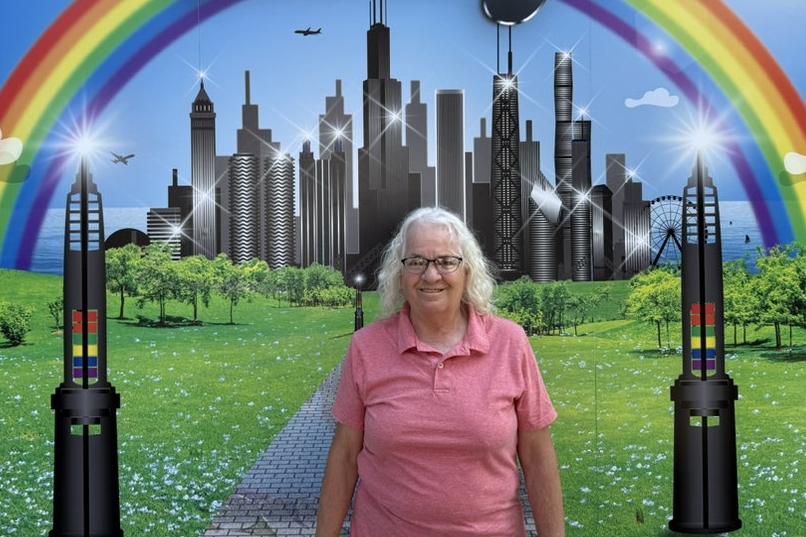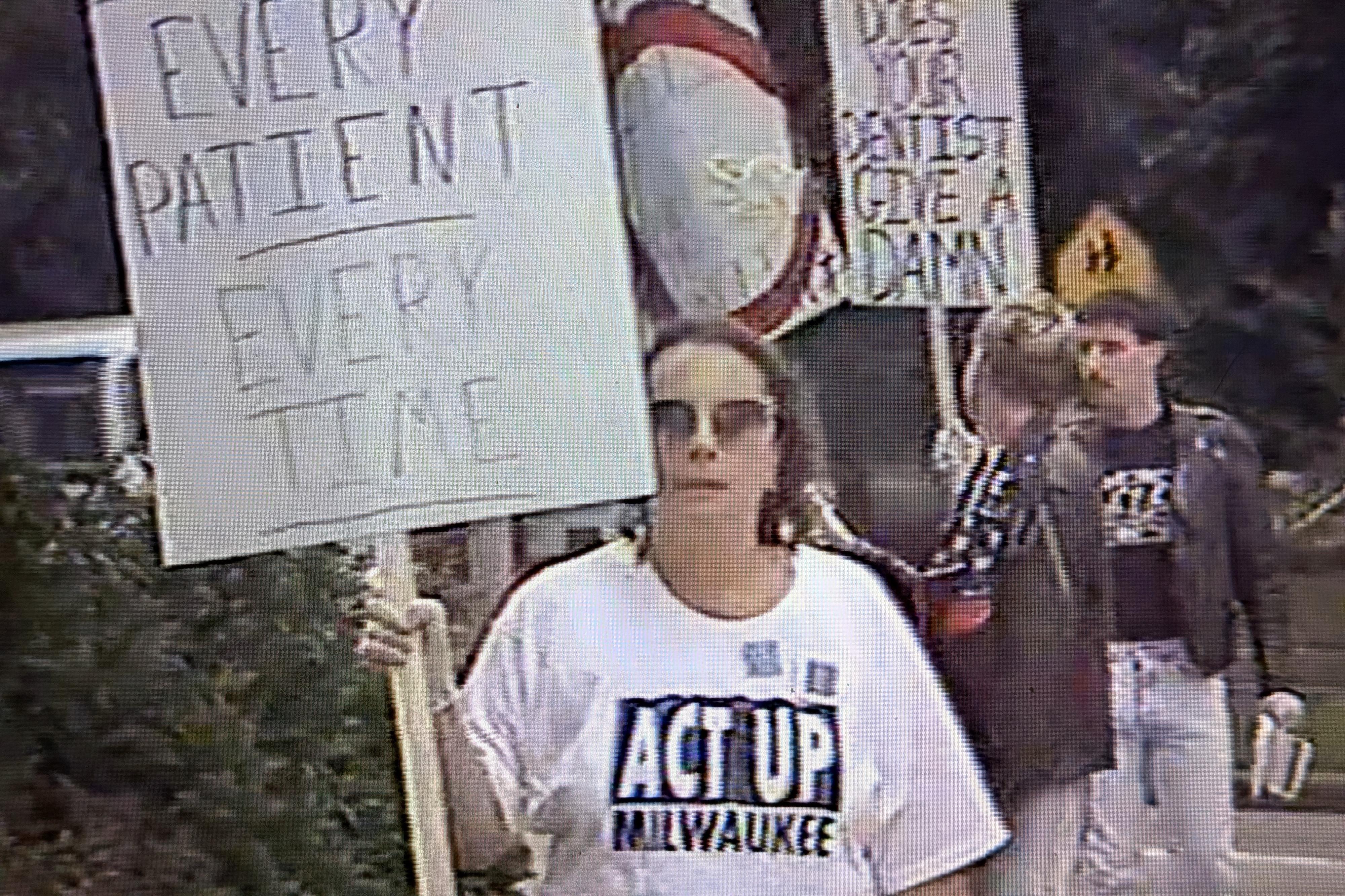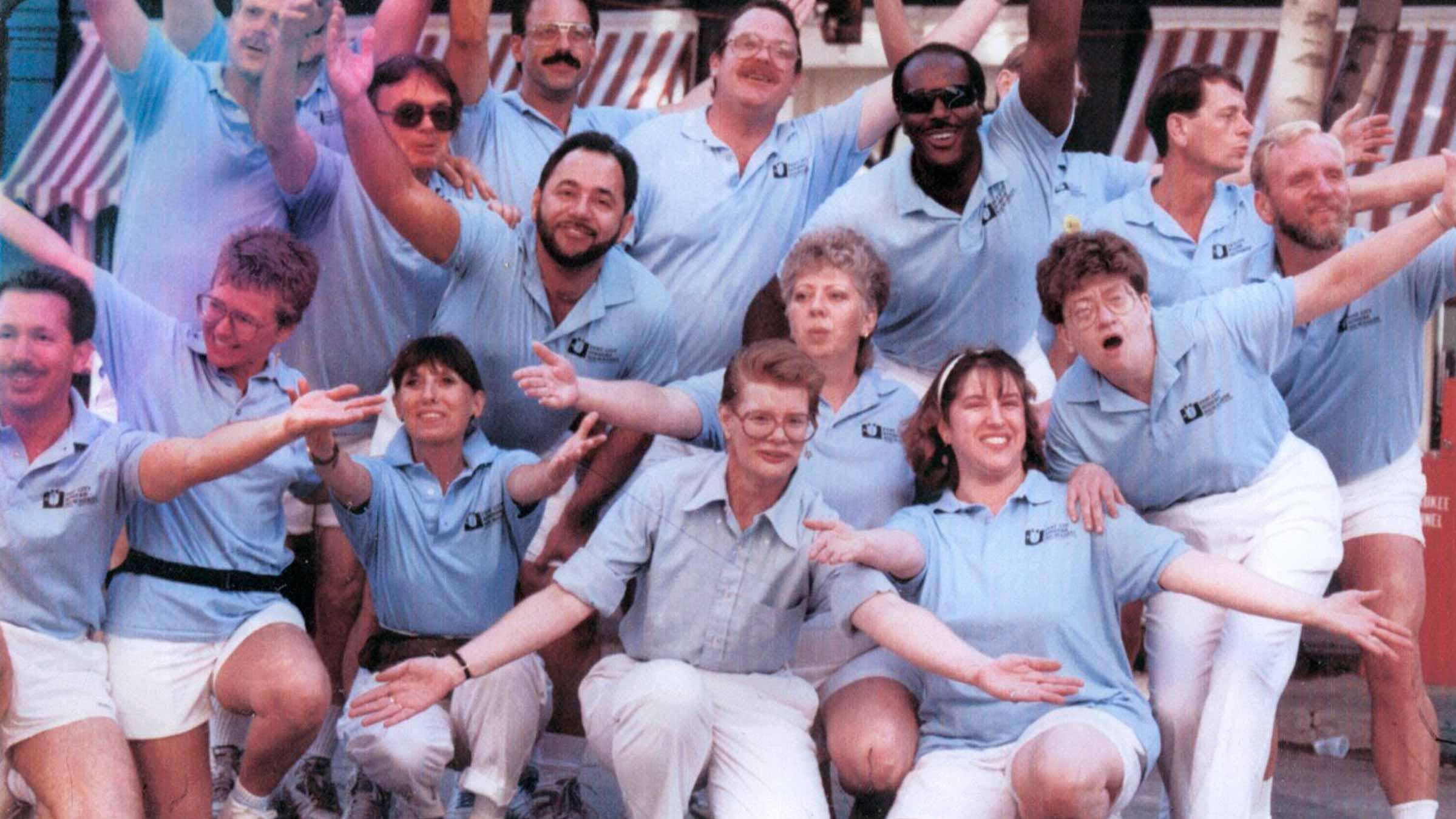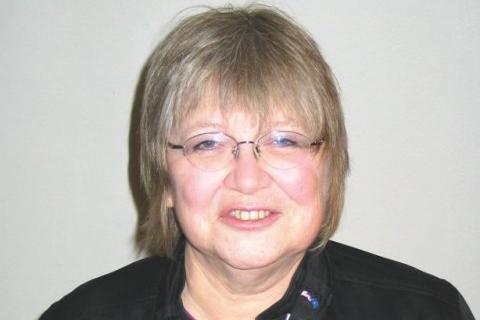
Maryann "Flash" Gorski: never stop searching for unicorns

For over 50 years, Maryann "Flash" Gorski has been advocating for bisexual awareness and acceptance in Milwaukee.
Maryann “Flash” Gorski was born January 8, 1951. She grew up on the South Side of Milwaukee. Her family lived near 4th and Mitchell and later in Bay View. They operated Uncle Ollie’s Meats, which sold the best homemade Polish sausage at two locations (33rd and Lincoln and 71st and Rogers.)
“We had an old Prussian butcher who used his own secret seasoning mix,” said Flash, “and he took that recipe to his grave! He didn’t even leave it to his sons.”
She attended Pius High School, where she met her first gay friend Jim Lohse.
“During my junior year, my sociology teacher divided the year into trimesters,” said Flash. “One trimester, he decided we were studying homosexuality. This was at a Catholic high school, mind you. It really opened a lot of minds.”
“Once you start meeting people, you start seeing people everywhere,” said Flash. “5th Street Big Boy became our home. We were just down the street from the Antlers Hotel, where the boys sometimes met dates. The host was one of those classic 1950s beehived beauties. Well, we learned she was dating Spike the Dyke!”
“When Big Boy closed for the night, we’d head down to the 24-hour Loop Café (5th
and Michigan.) Sometimes we’d stay long into the night. It was like a George Webb’s, but nowhere near as fancy. They didn’t serve liquor, so as long as you behaved, you wouldn’t get kicked out. A lot of the drag queens went there after their shows. It’s possible someone in the business was involved with the Loop. That’s where I learned how to spot a drag queen. Nik Santilli said, “look at their hands – and look at their Adam’s apple!”
Flash fondly remembers one of those queens. “He was a 6’2” African American man named Carl, but to us, he was the fabulous Maxine. She was a fashion plate who wore platform heels, and she was a very convincing queen. I remember finding her in the corner making out with a married guy at a party. One night, a carload of guys pulled up outside Big Boy and started yelling at Maxine and my friend Debbie, hooting, hollering, and calling her names. Maxine calmly told Debbie to go inside. She asked one of the guys to say it to her face. What he didn’t know is that she always carried a brick in her purse. The next thing we knew, the car races away, and people are running into Big Boy yelling, ‘there’s a chick beating up a guy with her purse outside!”
“It was starting to happen for me,” said Flash, “I’d already been with guys, but now, I started to think about dating women. One time, Karen Long walked past our table at Big Boy, and rapped her fists on it. Woah – did I just get cruised by Karen Long? She was one of the hotties of the era, with this beautiful long hair. Another was Kim Graeder. A friend always said, ‘one of the things I’ve see flashing before my eyes when I die is Kim Graeder stretched out across a pool table.’ What a memorable sight. I had crushes on both.”
College years
Flash graduated from Pius in 1968. She planned to attend UW-Madison after high school, but a health crisis at age 17 forced a change of plans. “Madison cost money, cars cost money, and I didn’t have money,” said Flash, “so I lived at home and went to UW-Milwaukee instead.” At first, she studied journalism (which she now wishes she’d stuck with) – but she switched to being a theater major soon after.
“That’s where you meet all the gay people in college,” she laughed. At the time, gay men would “drop hankies” and lesbians would “drop wrenches” as subtle clues about their sexual identities. “It was an early form of gaydar, a way of figuring people out without having to ask.” Later, she realized one of her uncles might have been a drag queen.
Living at home got uncomfortable, so Flash moved to the East Side, where she lived in an infamous apartment above the Tuxedo (2647 N. Downer Ave.) Her roommates, Janet and Shugi, were a lesbian couple that she met at UWM. Things were good for a semester – until Flash was asked to move out.
“I picked up this big gorgeous blonde guy in the Tuxedo,” said Flash, “just this beautiful male model type. Well, he came upstairs, and Janet was so mad! She said, ‘I don’t want to hear a male orgasm through my bedroom wall.’ Shugi told me, ‘I’m not going to get laid anymore if you don’t leave, so you’re going to have to leave. That’s what Mama says.’ Out I went!”
“My friends found a photo ID in a trash can and gave it to me,” said Flash. “Now, she had red hair, and I had blonde hair, but it was styled like hers in the photo. Well, guess what? She was dead. She’d died in a car accident. What if I get in trouble and they called her mother? I just couldn’t keep it. I felt too bad. And no big deal, because one of the little radical dykes ran off with it!”
“The boys introduced me to Janet Gurwitz, and I fell madly in love,” said Flash. “She was a nice Jewish girl from New York City who wore patchouli. She just seemed so incredibly cool. But she taught me a lesson: I wasn’t butch enough. She said, you’re a femme, and I’m a femme, so we can’t be together. That’s just how it works.”
Janet took Flash to the Nite Beat (183 S. 2nd St.,) the ruling women’s bar of the 1960s.
“She said, ‘if you think you’re going to do this, I want you to see what it can lead to.’ We went to the Castaways first, then Nite Beat. It felt like you were walking into a cellar, even though you weren’t. It was dark, long, and filled with cigarette smoke. The owners were a couple who didn’t put up with any shit. Any trouble and you were out. Or, even worse, they’d set you up to take the fall during a raid. The police would alternate bars they were raiding, and they would tell some of the connected bar owners in advance. Stan would go around and say to their good customers, ‘you should leave right now, we’re about to get raided.’ They protected the ones who spent money, who behaved, who didn’t make trouble. But if they suspected you of being a drug dealer, they’d let you be a victim of the raid. Morale of the story, if they told you to leave, you left!”
“I remember meeting Buffy St. John, this scrappy little dyke, who softly caressed my hand and said, ‘you’ve had the rest, now have the best.’ I’d never seen any woman who looked like that. My mind was racing, oh my god, this is weird, who are these people? Nite Beat was a real diesel bar. The diesel dykes ran the place. You’d see a bit of cross-dressing in men’s clothes. One person named ‘Harry’ was always in a suit and tie. I would never have known she was a woman.”
Flash compares the experience at Castaways, just across the street, which was more mixed, but no less volatile.
“This guy was harassing girls around the pool table,” said Flash, “and Suzette Sanchez just took a deep breath, did a complete pirouette, and flattened the guy across the pool table with one punch. Nobody saw it coming from her.”
“I went to Castaways a lot with the boys,” said Flash, “and I was always a little nervous about it. So, one night, they said ‘why don’t you ask someone to dance? March up to the prettiest girl in the place and ask her to dance.’ So, I did, but she said no – because it was Jamie Gays, the ruling drag queen of the time. The guys were dying because I hit on a drag queen.”
“Going out to the boy bars was always a trip. One night, a cab driver tried to talk us out of going to the Castaways. ‘You don’t understand what kind of bar this is, it’s men, it’s all men,’ he kept saying. And we were like “good! That’s exactly what we’ve been looking for! Lots of horny drunken men!”
The nights would often end at the Rooster Bar (173 S. 2nd
St.,) where Flash’s roommate Herman Schmidt would grab the microphone and yell “AFTER BAR PARTY 3222 N. Downer!” Later, Flash enjoyed the scene at the Leaded Shade (157 S. 1st St.,) which had beautiful Tiffany lamps that made everyone looked gorgeous.
“You simply could not look bad at the Leaded Shade,” said Flash. “Underage girls would sneak in over the back wall, and Sharon would allow them if she knew them. The Leaded Shade was an all-women space that felt sophisticated and upscale. I only saw a man there once – naturally, I was hitting on his girlfriend.”
One of Flash’s favorite memories was the closing of the River Queen, not because the bar closed, but because she took home a priceless souvenir: her favorite bar stool! “Someone tried to walk out with the jukebox that night, but someone stopped them,” she laughed. (Unfortunately, the bar stool was later destroyed when a 500-lb man sat on it.)
Revolution now
Flash notes that nightlife was only part of her college experience.
“We were really political,” said Flash, “and we were always ready to march for a cause: Vietnam War protests, bombings in Cambodia, Kent State, Jackson State, the UWM student strike. We got in people’s faces. We really went for it. There were a lot of Communists back then.”
Flash was part of the UWM intelligentsia curated by educators Morgan and Barbara Gibson.
“By the time I met them, they were what we’d call ‘poly’ today,” said Flash. “One night, we’re all spending time together in her living room, talking about how women and gay men weren’t allowed to be priests. Barbara decided we should have a procession. Jerry Dreva was the priest and we all lined up behind him and gave confessions. Barbara said, we need a rosary if we’re having a procession, and then her 13-year-old daughter Lucy handed her one out of nowhere. It was perfect.”
Flash remembers the UWM Student Strike of May 1970 – and Barbara Gibson’s inspiring role. “She went into the library, grabbed handfuls of books, and said ‘don’t fuck with me or I’d destroy all of these. So bold, they didn’t know what to do with her.”
She clearly remembers heading down to Chicago September 3, 1971, where she partied all weekend with her gay friends in Boystown. Upon getting off the bus in downtown Milwaukee on Labor Day, September 6, 1971, she encountered a kazoo band announcing the Vietnam Veterans Against the War Parade.
“This was like an anti-Labor Day parade,” said Flash, “and it was led by a veteran. It caught my attention immediately. And then, I see Nik Santilli driving his mother’s car with Chuckie sitting on top. He was the ‘hood ornament’ and he took his job very seriously. The boys told us, ‘Hurry up, get in the car, come on!’ So, we jump in the car. Almost immediately, the car overheated and died in the middle of the parade.
Someone, I don’t remember who, has this great idea: we’re going to PUSH the car the rest of the way. Chuckie wouldn’t help, he said ‘I’m the hood ornament and I’m just here to look pretty!’ So, here’s me, cigarette dangling out of my mouth, pushing the car down to the Art Museum. There were so many whistles and cheers. The boys were all done up in peacock eyelashes, waving to the sailor, ‘hey honey!’ How we got away with this gender-fuckery, I don’t know.”
Chuckie wound up pictured on the front page of the Milwaukee Journal that day. It was the first time a proud gay person was ever seen in a Milwaukee newspaper. If you look a little closer at the photo, you might see Flash behind the car.
Sexual politics
Flash considered Nik Santilli an “educator” as well as a “corruptor.”
“He taught me what bisexuality was,” said Flash. “At that time, it was anathema. Nobody believed in it, nobody accepted it, and it became a source of great anxiety throughout my life. I faced a lot of discrimination just for being me. And then, Debbie Parks came along and called herself bisexual. And that was very liberating, like oh, this really does exist. This is really something I can be.”
“After I lived with Janet and Shugi, I moved in with some straight women. One of them was cruising a guy one night, when he asked her if we were a couple and if she was a dyke. After a house meeting, the roommates kicked me out because they didn’t want anyone thinking they were gay.”
“So, I found an apartment on my own near the Layton School of Art, which was a “gay area” at the time,” said Flash. “I was near the famous Bon Bons house on Astor and Ogden. I remember when Gary (Pietrzak) and Mark (Slizewski) robbed Triangle Drugs on Brady and Farwell, sampled the drugs, and passed out before leaving the scene of the crime. What a story.”
“While living on the Lower East Side, I realized how men and women had vastly different issues to overcome. One of my friends had her daughter taken away, and she was limited to seeing her only for one hour a week with her ex-husband and mother present the whole time. Many women lost children, were denied visiting privileges, and had to pretend to be straight. The boys were worried about getting in trouble in Juneau Park and Mitchell Hall. ‘You can’t compare being denied washroom sex with having your children taken away from you,” said Del Martin. And she was right. The scene started getting more separatist, more hostile.”
Flash was dating men and women interchangeably by the early 1970s. She got serious with Gene Gessert, who managed the Grand Prix (144 E. Juneau) where her friend Herman go-go danced. But both Flash and Gene faced serious stigma.
“Bisexuals were not acknowledged as a separate group,” said Flash. “Gay people thought we were in denial; straight people thought we were in the closet. There were social consequences: you couldn’t get laid, and even if you did, you couldn’t find anyone to date you after getting laid. Word would get out, and you’d be labeled. It was easier to play by the rules, but why?”
“The boys took him aside and said, ‘you can’t keep seeing a woman, you just can’t, that’s not how it works,” said Flash, “and the girls were telling me the same thing, ‘you’re a dyke, what are you doing with a man?’ I almost married Gene. We had everything lined up: the blood tests, the marriage certificates, the witnesses, even the engagement party. Father Joe Feldhausen came to the party and said, ‘let me save you the trouble, I’ll marry you.’ In the end, it just didn’t work out, but we remain friends even now.”
“To be fair, I was also in love with an Italian girl at the same time,” said Flash, “She burst out of the bathroom at Castaways as I was walking in. ‘Marilyn?’ she asked me, and I said no, Maryann. She was a friend of Gene Harper, who told her to meet me at the bar. In the end, I wasn’t butch enough for her. She was a looker!”
In the early 1970s, Flash traveled to Toronto with her friend Herman as part of a theatrical production. While she had a fantastic time performing, and even met members of the Kennedy family, she was surprised by the sexual segregation of the British bar system. Simply put, men-only bars were men-only – without exception.
“I tried to find the guys, and they wouldn’t let me in!” she laughed. “So, I said to hell with it, I’ll find some dykes. I was at this bar when the most gorgeous woman I’d ever seen walked in: Helen of Troy body, fringe vest with an American flag, amazing energy to her. I said, ‘who is that?’ and I was told ‘that’s Adrienne, but she’s butch.’ When I said, ‘I don’t care, she is gorgeous!’ I was dragged outside to the lobby and called on the carpet! ‘What’s with you? Are you butch or femme? You must decide!’ And I said, ‘listen in the U.S., we’re trying to get away from all that.’ So, she takes me to a three-level lesbian bar with hundreds of well-dressed, gorgeous women. That night, I got a little test, and, in the end, she said ‘you are butch, I knew it all along.’ And she kicked me out! I had to spend the night in a women’s hostel!”
Still wondering where the name Flash came from? “Spike started it when I had David Bowie hair and a pink aluminum jacket. But nobody else used it until I decided to use Flash Gorski as a stage name, and during the flash photography phase of my lakefront sunrises.”
Flash today
As the 1970s went on, a lot of people from the “leftie/hippie” scene left Milwaukee. Some people stuck around but scattered to the winds. After Flash gave up drinking, she lost touch with anyone from the bars.
Flash married Bryan Hagquist in 1981. She is proud of her two daughters, Alexis, and Kira, who both live in Milwaukee: and her two grandchildren Dante and Beatrice. She is a fifteen-year cancer survivor who is now enjoying the best of retirement.
She is proud of her work as an anti-violence community coordinator for the Milwaukee LGBT Community Center, as well as her stand-up comedy work with SAGE and the Milwaukee Gay Arts Center.
As a long-time member of Bi Definition, she is thankful for the work of Bi+ Pride Milwaukee.
“I’m glad it’s happening, because it’s something I wanted all my life,” said Flash. “Amy Luettgen really got this group kicking, and I’m grateful for it, even though I’m definitely the oldest member!"
And, after all this time, she's still searching for unicorns.
"If you know, you know," she says with a wink.
“After all this time, people still tell me, oh, you bisexuals, you’re just sex addicts, you’re just confused, you’re just greedy, you just want it all."
“And to them, I say nah. You’re just lazy.”
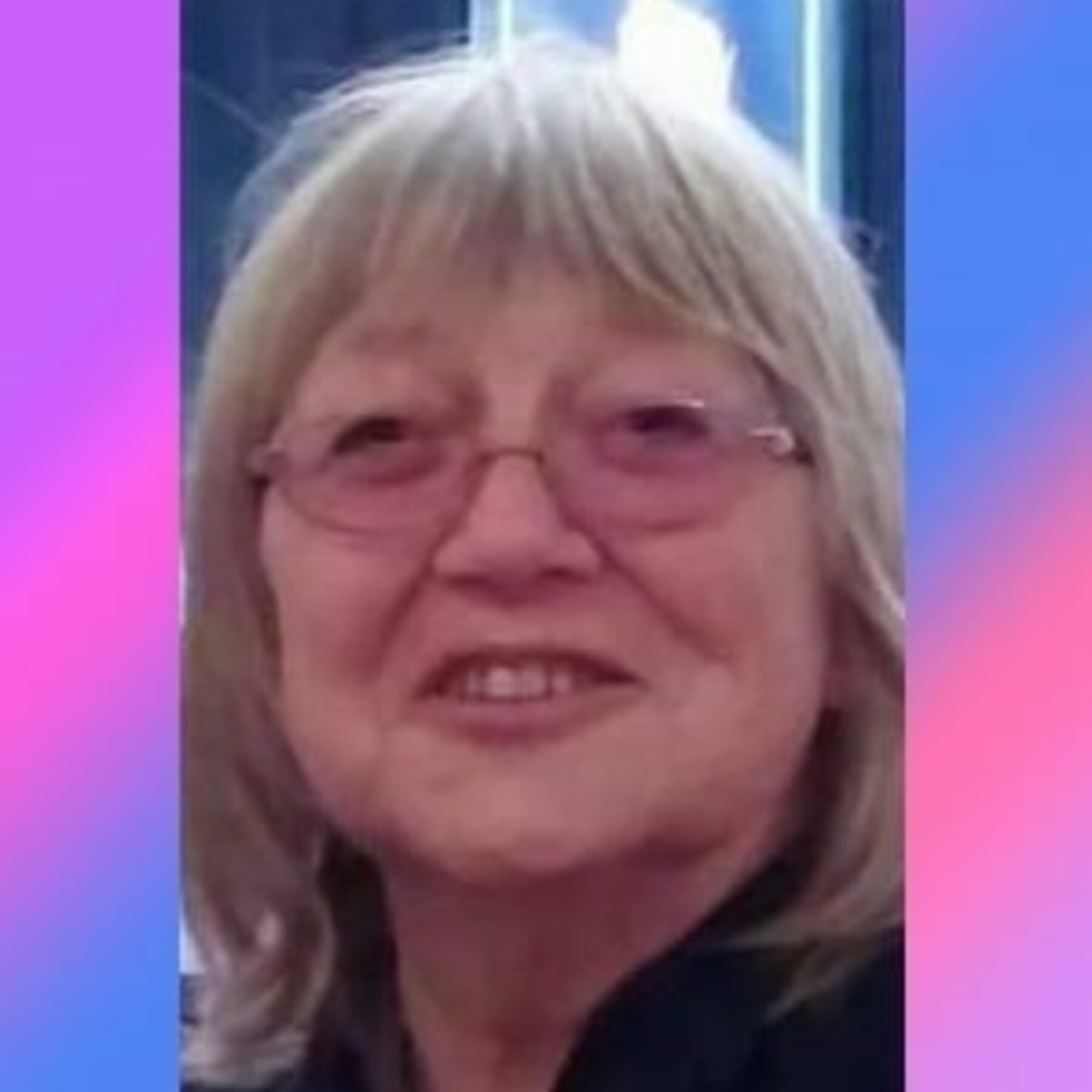 Flash is a proud member of Bi Pride Milwaukee.
Flash is a proud member of Bi Pride Milwaukee.
recent blog posts
December 17, 2025 | Michail Takach
December 16, 2025 | Michail Takach
December 01, 2025 | Dan Fons
The concept for this web site was envisioned by Don Schwamb in 2003, and over the next 15 years, he was the sole researcher, programmer and primary contributor, bearing all costs for hosting the web site personally.
